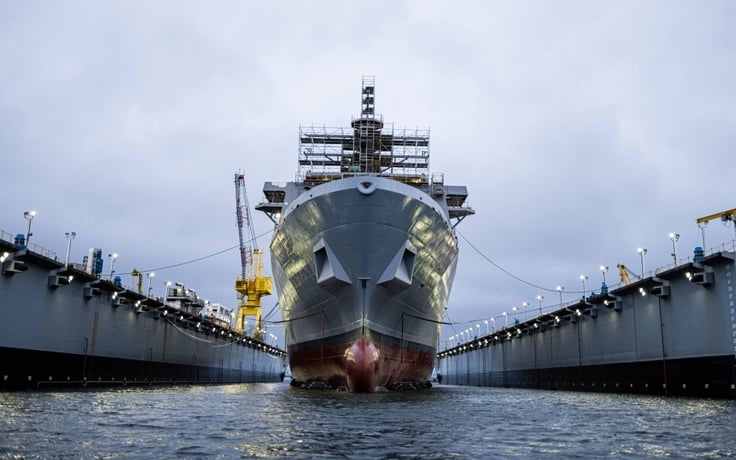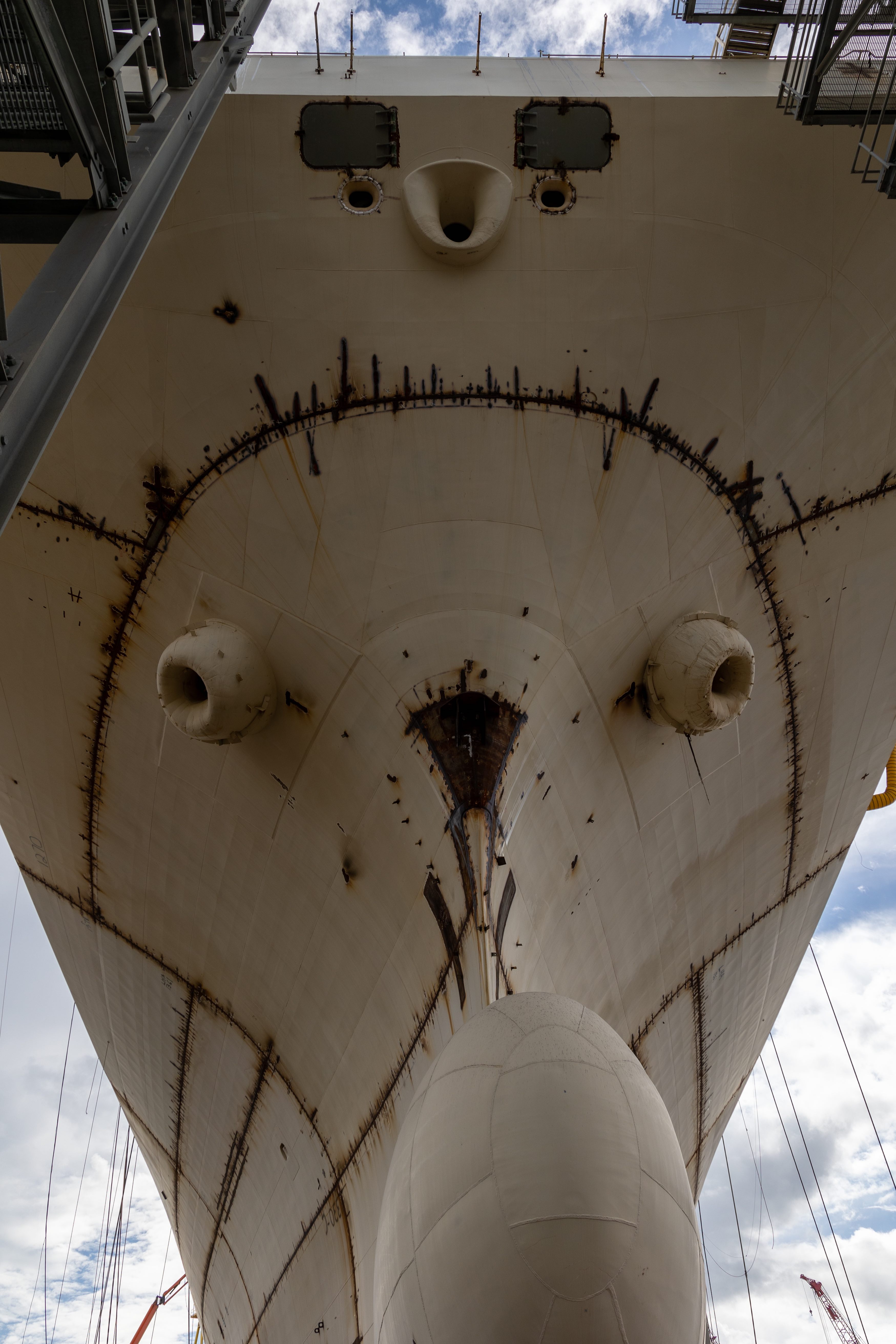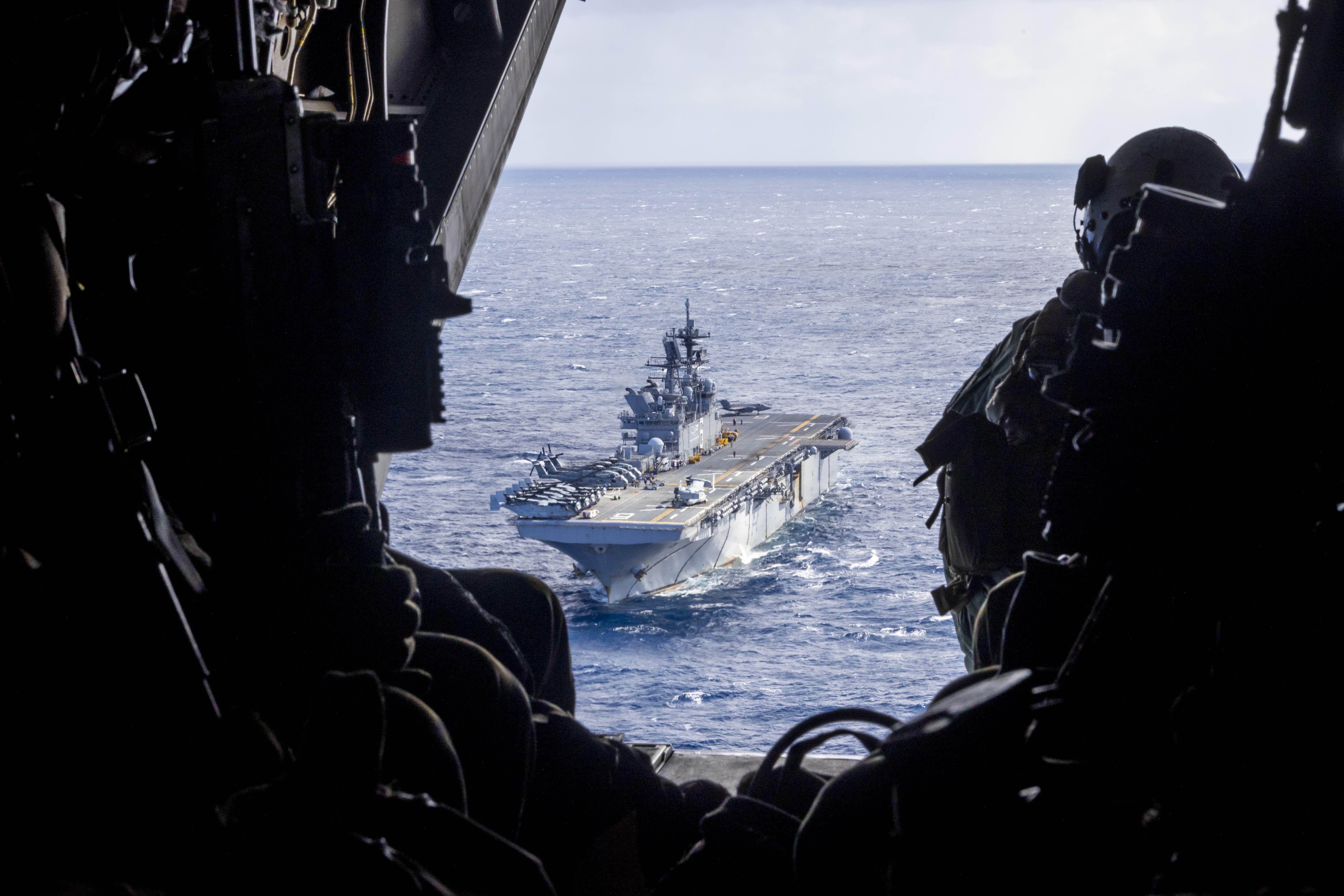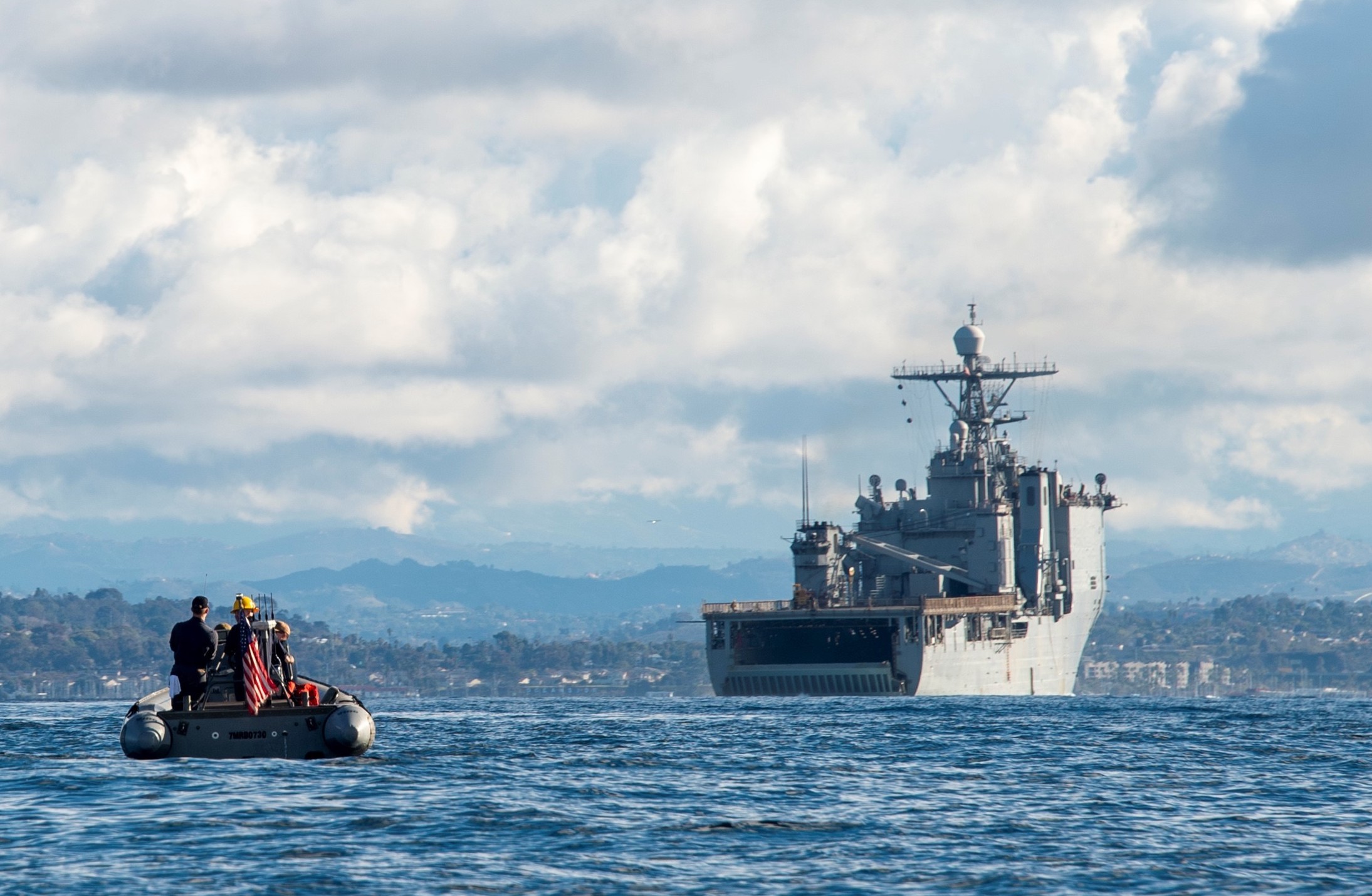
The Defense Department’s Fiscal Year 2024 budget request will not seek to buy any San Antonio-class amphibious warships in the next five years, exposing a continued fissure between Pentagon and Marine Corps priorities, USNI News has learned.
The $842 billion budget request, which the Defense Department will formally unveil on Monday, will not ask to buy LPD-33 in the FY 2024 Future Years Defense Program. That ship was previously scheduled for procurement in FY 2025. Lawmakers authorized and appropriated $250 million in advanced procurement funding for the LPD-17 Flight II warship last year in the FY 2023 defense policy and spending bills at the request of the Marine Corps.
The decision not to ask for LPD-33 stems from the so-called “strategic pause” Navy Secretary Carlos Del Toro said the service is taking on purchasing amphibious warships, as reported by Defense News. Del Toro said the pause is so the Navy can perform evaluations on the numbers of amphibious ships it needs and the types of capabilities those warships should have.
The Navy plans to hold off on awarding the advanced procurement funding contract for LPD-33 for the duration of the pause, a Navy official confirmed to USNI News.
Asked about the strategic pause on Thursday at an event hosted by the Amphibious Warship Industrial Base Coalition, Marine Corps Commandant Gen. David Berger told USNI News that Del Toro would need to explain the Navy’s position.
“I can tell you 31 is the floor. Operational and by statute, we can’t do with one less,” Berger said.
Asked what the impact of the strategic pause is, Berger said: “The inventory’s going to go down. The risk is going to go up – the risk meaning our ability as a nation to respond when needed and sometimes you can’t predict that. The risk goes up that the combatant commander doesn’t have the right tool for the job. That’s the risk.”

A spokesman for the Marine Corps Deputy Commandant for combat development and integration told USNI News the halt in buying amphibious ships could jeopardize the line.
“Depending on the length of a strategic pause, it risks the complete shutdown of a line. If a shipbuilding line shuts down, the risk to meeting future requirements greatly increases,” Maj. Josh Benson told USNI News. “Shipyards will be forced to cut workforce personnel. These losses will include skilled labor with years of experience that have been carried forward from keel to keel.”
After delays last year, the Navy sent Congress a separate amphibious ship requirements study that had been in the works for months, but the report was classified. Last month, Del Toro said the Navy is working on a new evaluation of battle force ships that would inform its amphibious ship procurement.
“I am also confident that once we complete this year’s Battle Force Ship Assessment and Requirements Study, we will also see a continuing need to build more LPD-like ships well into the future to support our Marine Corps and support Force Design 2030,” Del Toro said at the WEST 2023 conference, co-hosted by the U.S. Naval Institute and AFCEA.
The Marine Corps worked with the chief of naval operations staff on a Capabilities-Based Assessment to evaluate future amphibious ship capabilities, Benson said.
“This will provide the analytic underpinning of our review of the LPD Flight II, and what the next amphibious warfare ship should be. In the meantime, LPD Flight II is in production and programming additional ships will enable the Navy to retire legacy LSD platforms on a one-for-one basis,” Benson told USNI News. “Without a programmed replacement for LSD’s being decommissioned, substantial risk falls on the Combatant Commander as the requirement for 31 ships will not be met. This is unacceptable.”
The FY 2024 proposal to halt the LPD-17 Flight II line is expected to receive criticism in Congress, which last year provided the Marine Corps Commandant with a direct say in deciding the amphibious ship requirement and force structure. Lawmakers set a floor of 31 large amphibious warships, a benchmark both Berger and lawmakers argued for Thursday at the event.
“My commitment to the future of these platforms is unwavering regardless of the Navy’s intent to strategically pause purchasing. This weakens our workforce to do this strategic pause and throws away the experience on the production lines, which at the end cost both the buyer and the builder additional dollars,” said Rep. Trent Kelly (R-Miss.) “We must ensure that we have the necessary assets to meet any challenge, especially with China lurking in the future. And amphibious warships are … I would say the key component to this readiness.”

Kelly, the new chairman of the House Armed Services Committee seapower and projection forces subcommittee, recently visited HII’s Ingalls Shipbuilding, which builds the LPDs and LHAs at its Pascagoula, Miss., yard. The 31 amphibious ship floor, and the Marine Corps’ overall strategy both for amphibious ships and its Force Design 2030 effort to reshape the service for a conflict with China, have received bipartisan support in Congress.
Speaking at Thursday’s event, Berger said the Navy should employ procurement strategies like block buys or multi-year buys for amphibious ships to most efficiently use taxpayer dollars.
“Using tools like multi-year buys to make sure the taxpayers get their dollars worth – we have bought these one at a time. That’s not the way you do it. We do it. We do block buys for other platforms – and for all the right reasons – destroyers, submarines, aircraft carriers. All the right reasons. We need to do it also for amphibious ships. Why? You heard it. You all know it better. That’s the signal that tells you all we have 10, 15 years worth of work. This is not one at a time.”
The commandant reiterated the Marine Corps’ position that the San Antonios and America-class big deck amphibious warships should get built on two and four-year-centers, respectively, to help industrial base suppliers keep their workforce and the line going.
Berger acknowledged the Navy and Marine Corps should assess what comes after LPD-17 Flight II, but said the military needs LPDs now.
“We should start thinking about that collectively, in other words, between the Navy, Marine Corps and industry. What … the next LPD might look like. But I was part of the study in 2014 that decided that the Flight II was exactly what the nation needed,” he said.
“So I don’t buy any argument … ‘I don’t know why we have Flight IIs because they’re not the viable platform.’ I went through a year and half with the Navy of studying that. And we got to the right answer. LPD is today. The Flight II is what we need right now. But we should start planning – start thinking about next.”
Asked about potential design tweaks to the LPD line, Benson said significant alterations to the line could affect delivery schedules.
“As these ships hit the fleet, we will continue to evaluate the requirements for vessels in production. However, we cannot afford to make wholesale changes that severely delay scheduled delivery,” he said of the LPDs.
“If LPD Flight II is not programmed, then the amphibious warfare ship industrial base will be forced to reduce the workforce starting in FY27.”
To reach the 31-ship amphibious floor, the Navy would need to adjust its approach to buying amphibious ships and retiring older ones, according to Eric Labs, a senior analyst at the Congressional Budget Office.
“To the extent that they’re going to try and maintain that goal, they’re going to have to change how they handle LSD retirements from what the current plans show, and they’re going to have to increase their purchases of LPDs and LHAs by 65 to 130 percent, depending on which Navy alternative in that 2023 shipbuilding plan you were talking about. The FYDP can’t have all bunch of zeros for the next four years if they want to maintain that,” Labs said Thursday at an event hosted by Defense One.

Berger acknowledged that amphibious ship readiness is currently at 32 percent and that the Navy has a lot of work to do to increase that number, but argued the service can’t decommission the older LSDs without new ones coming online.
“We have to have the inventory not less than 31 [ships]. To me, that’s a combination of old and new. We cannot decommission a critical element without having a replacement in our hand,” Berger said when asked how he argues to maintain the aging ships despite readiness issues.
“We can’t do that, or else, back to risk … we’re not going to have the tools or it’s not going to be available. So the decommissioning of the LSDs to me is directly tied to the inventory as fast as we can procure and field.”
The Navy sought to decommission four older Whidbey Island-class dock landing ships in last year’s FY 2023 budget proposal, but Congress rejected the proposal. The service also sought to end the LPD-17 Flight II line, a move lawmakers also rejected by adding in the $250 million in advanced procurement funding for LPD-33. That funding was at the top of Berger’s annual unfunded wish list for FY 2023.





